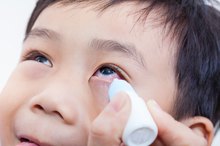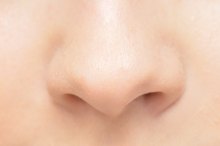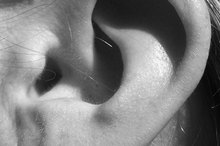Warning Signs and Symptoms of a Dangerous Sinus Infection
Sinusitis describes inflammation of one or more of the paranasal sinuses, the air-filled spaces in the facial bones that open into the nasal cavity. This condition often occurs because of infection. Although infectious sinusitis is certainly uncomfortable, it usually does not pose a serious health threat. However, rare complications of infectious sinusitis can be dangerous and potentially life threatening if not diagnosed and treated promptly. These complications involve spread of the infection to the structures around the eye, the facial bones and/or the nervous system. Although rare, it's important watch for warning signs and symptoms that might signal a potentially serious infectious sinusitis complication.
If you are experiencing serious medical symptoms, seek emergency treatment immediately.
Eye Signs and Symptoms
An infection in the sinuses can sometimes spread to the eye structures and cause a variety of signs and symptoms, depending on which tissues are involved. Profound swelling, typically affecting one eye, is a characteristic symptom. Eyelid swelling is often so severe that the affected eye can barely be opened. Other signs and symptoms that suggest eye-related complications of a sinus infection include:
- Swelling of the white portion of the eye
- Pus drainage from the involved eye
- Redness of the eye and/or eyelid
- Protrusion of the affected eyeball
- Pain with eye movement
- Inability to move the affected eyeball
- Decreased or blurry vision in the affected eye
- An infection in the sinuses can sometimes spread to the eye structures and cause a variety of signs and symptoms, depending on which tissues are involved.
Forehead Pain and Swelling
What Is Pan Sinus Disease?
Learn More
An infection of one or both frontal sinuses that spreads to the overlying bone can cause a lump-like swelling of the forehead and possibly the front of the scalp. The swelling is usually limited to one side. This uncommon complication of sinusitis, known as frontal bone osteomyelitis, is rare but serious. Usual accompanying symptoms include fever, pain and tenderness of the involved bone, and frontal headaches. Frontal bone osteomyelitis was previously known as Pott puffy tumor, a misnomer because the condition is caused by infection of the frontal bone rather than a tumor. This complication of infectious sinusitis can develop at any age but is more common in adolescents and young adults than it is in older adults.
- An infection of one or both frontal sinuses that spreads to the overlying bone can cause a lump-like swelling of the forehead and possibly the front of the scalp.
Nervous System Signs and Symptoms
Because of the close proximity of the paranasal sinuses to the brain, infectious sinusitis can potentially spread to the central nervous system. This complication is potentially life threatening and can cause a variety of signs and symptoms, including:
- Fever
- Headaches
- Confusion and/or extreme drowsiness
- New-onset seizures
- Neck stiffness
- Vomiting
- Inattention
- Apathy and/or reduced motivation
- Personality changes, such as lack of emotional expression or inappropriate emotional responses
Warnings and Precautions
Cheek Bone Diseases
Learn More
Although dangerous complications of infectious sinusitis are rare, they can and do occur -- often in combination with one another 4. Seek immediate medical evaluation if you suspect you have a sinus infection and develop any of the warning signs and symptoms discussed. This is particularly important if you have diabetes or a weakened immune system. However, even people who are otherwise healthy rarely develop sinusitis complications 6.
Reviewed and revised by: Tina M. St. John, M.D.
Related Articles
References
- Head & Neck Surgery -- Otolaryngology, 4th Edition; Byron J. Bailey, et al.
- Canadian Family Physician: Acute Sinusitis
- Otorhinolaryngology, Head and Neck Surgery; Matti Anniko, et al.
- International Journal of Otolaryngology: The Complications of Sinusitis in a Tertiary Care Hospital: Types, Patient Characteristics, and Outcomes
- Australian Family Physician: Sinusitis
- Case Reports in Emergency Medicine: Evaluating Complications of Chronic Sinusitis
- Baylor University Medical Center Proceedings: Pott Puffy Tumor
- Merck Manual Professional Version: Preseptal and Orbital Cellulitis
- American Journal of Case Reports: A Tumor That Is Not a Tumor But It Sure Can Kill!
- Seminars in Plastic Surgery: Osteomyelitis of the Craniofacial Skeleton
- Patient.info Professional Reference: Frontal Lobe Syndrome
- Open Journal of Clinical Diagnostics: Management of Intracranial Complications of Sinusitis
- Diagnosis in Otorhinolaryngology: An Illustrated Guide; T. Metin Önerci
- American College of Allergy, Asthma & Immunology. Sinus Infection. https://acaai.org/allergies/types/sinus-infection.
- Litvack, J. Complications of Sinusitis. American Rhinologic Society. http://care.american-rhinologic.org/complications_sinusitis.
- MedlinePlus. Sinusitis. https://medlineplus.gov/ency/article/000647.htm.
- NHS Inform. Sinusitis. https://www.nhsinform.scot/illnesses-and-conditions/ears-nose-and-throat/sinusitis.
- Rosenfeld RM, Piccirillo JF, Chandrasekhar SS, et al. Clinical practice guideline (update): adult sinusitis. Otolaryngol Head Neck Surg. 2015;152(2 Suppl):S1-S39. doi:10.1177/0194599815572097
- Ah-See K. Sinusitis (acute). BMJ Clin Evid. 2011;2011:0511. Dec 21, 2011.
- Kwon E, O'Rourke MC. Chronic Sinusitis. StatPearls Publishing; 2019.
- Sanan A, Shumrick C, Nyquist G, Rosen M. Intra-optic nerve abscess: A rare complication of acute sinusitis. Otolaryngology Case Reports. 2017;2:13-15. doi:10.1016/j.xocr.2016.12.003
- Pincus DJ, Armstrong MB, Thaller SR. Osteomyelitis of the craniofacial skeleton. Semin Plast Surg. 2009;23(2):73-9. doi:10.1055/s-0029-1214159
- Sinus Infections That Don't Quit: When You Should Worry. Health Essentials from Cleveland Clinic. Sept 17, 2014.
- American College of Allergy, Asthma & Immunology. Sinus Infection.
- Litvack, J. Complications of Sinusitis. American Rhinologic Society.
- MedlinePlus. Sinusitis.
- NHS Inform. Sinusitis.
Writer Bio
Emily DeSerio has been a freelance writer since November 2009. DeSerio works in the mental health field as a clinical social worker. She began her higher level education at the University of South Florida (USF) with a B.A. in English and went on to complete a Master of Social Work degree at USF as well.







